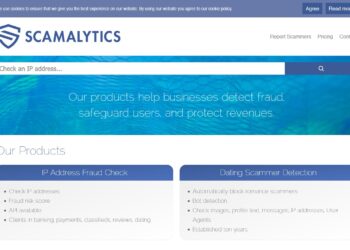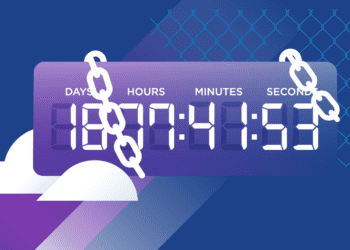The use of open-source components is widespread in every other software project. The latest attacks on open-source projects show attackers are taking advantage of this situation. SAST tools are one of the essential elements that can detect vulnerabilities early in the software development lifecycle. But is it secure enough to rely on automated security application tools? In this article, we will explore the benefits of using a more holistic approach.
Vulnerabilities in open-source code expand the attack surface exponentially
These days, software supply chains are distributed entities comprising several disparate software components from various sources. As shown in the recent security attacks such as the Kaseya ransomware, there is a worrying trend of supply chain attacks.
There is rarely a software project today that doesn’t contain an open-source component. Thus, the potential vulnerabilities in open source can cause a ripple effect with disastrous consequences.Why do we need more effective code security?
Technically, open-source components are usually more secure than most commercial proprietary software. The large communities of contributors help fix vulnerabilities faster in open-source projects than in commercial projects.
However, the State of Open-Source Security Report study found that from 118 libraries in the average application, only 38% are active. The unused libraries create an ideal situation for attackers to insert malicious code into a static library.
But it would be incorrect to think open-source is the only cause of code vulnerabilities. Any code can present security threats. Most code issues stem from developers not following proper security hygiene and practices. For instance, they are setting up software improperly, using easy passwords, not doing security tests early on the software development cycle, and more.
Security testing via sast tools is part of the essential kit any development company needs to protect the code but is that enough?
Securing open-source code goes beyond DAST and SAST tools.
If it isn’t broken, don’t fix it. That seems to be the motto of developers. Once they find a tool that works for them, it is hard to make them change. Static application security testing (SAST), and dynamic application security testing (DAST), among other application security tools, are robust tools that work. However, they alone are not enough to protect against today’s code vulnerabilities. Let’s review first how SAST and DAST tools work and their challenges:
How SAST works
SAST, also known as white-box testing, is a security testing method that monitors and analyzes source code to find vulnerabilities. A SAST tool will scan the application while the application is at rest.
SAST testing occurs early in the software development life cycle (SDLC) before the code is run. It helps developers fix security vulnerabilities early in the development process, giving them feedback as they code.
There are some drawbacks of SAST tools. They are not equipped to discover run-time security vulnerabilities. Thus, they are effective only for the first part of the job. Other challenges of SASTs may include the risk of false positives, being library dependent, and finally, some solutions cannot work with multiple programming languages and frameworks.
How DAST works
The solution looks for security vulnerabilities by simulating attacks on an application while it is running. DAST tests access points, affects attacker and user behaviour to find where the vulnerabilities are. Also known as black-box security, the test attacks an application from the outside, like penetration tests.
One of the drawbacks of DAST is that this testing doesn’t look at code, so it cannot identify which specific line of code is affected by the vulnerability. Also, by testing later in the SDLC, the vulnerabilities found can be more challenging to fix.
Most developers will combine both solutions to detect vulnerabilities in the applications, both at rest and running. However, securing a CI/CD pipeline requires more than SAST/DAST tools. Modern channels consist of an array of devices working together, most of them cloud-based. Thus, there are myriad opportunities for holes to exploit by an attacker. And if the last attacks taught us something is that they are complex and well-planned.
The CI/CD pipeline requires more than testing tools but a holistic security approach to tighten the security posture.
Five steps for secure applications
Creating a secure application requires a holistic approach to security throughout the SDLC. Shifting left is not enough. You should bake security practices into each phase of the development process.
The development lifecycle consists of 5 stages. Let’s see how you can support security across it.
Requirements
When you identify the requirements for your applications, take the opportunity to list the security requirements for each application’s functionality. For instance, if you need to transport sensitive data.
Design
Once you have identified all security requirements, it would be easier to design your application around them, for example, which authorization and authentication protocols you will use.
Coding
Here is when you can apply secure code best practices. At this stage, you can use SAST tools to detect vulnerabilities in the code. Don’t wait until the testing phase to check for vulnerabilities. It may be too late.
Testing
At this stage is when you apply DAST tools to check for vulnerabilities before release. You can also implement other application security testing solutions like software composition analysis (SCA).
Release
Take the opportunity to build a continuous security loop plan. Schedule routine security tests or leverage a platform that will report security bugs.
How to choose the right testing stack
We discussed why it is essential to combine good security practices with security testing done well. There are many testing solutions out there. Your security testing stack should consist of a minimum of SAST, DAST, and SCA solutions or an integrated platform that offers these features. We compiled a shortlist of features you should look at when looking to build your security testing stack:
- Tracking and scanning: Look for a solution that offers dependency tracking, vulnerabilities scan, and automatic reporting.
- Easy to use: A centralized dashboard can offer a unified agent that integrates multiple components and languages.
- Integration to the pipeline: Look for a solution that integrates seamlessly with your CI/CD pipeline. Bonus points if you are using containers and the solution integrates to your Docker infrastructure.
- Dynamic testing: Automated scanning and tools for manual pen-testing.
Final thoughts
Securing open-source projects will become more critical as attackers focus their intents on them. Security application tools like SAST and DAST help prevent code vulnerabilities across the software development life cycle. A robust security stack combined with tight security practices can improve your security posture against advanced attacks.






